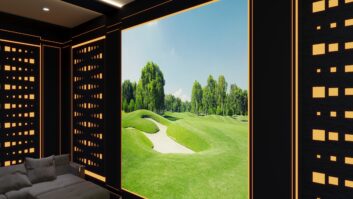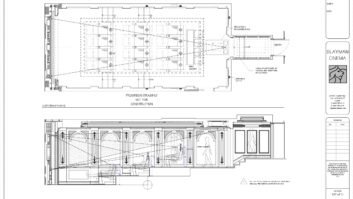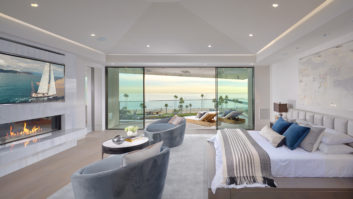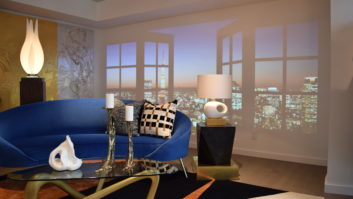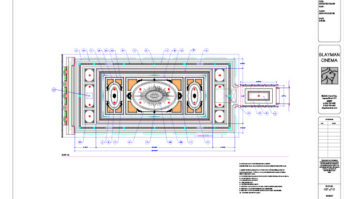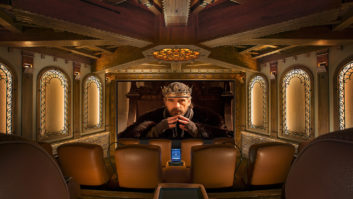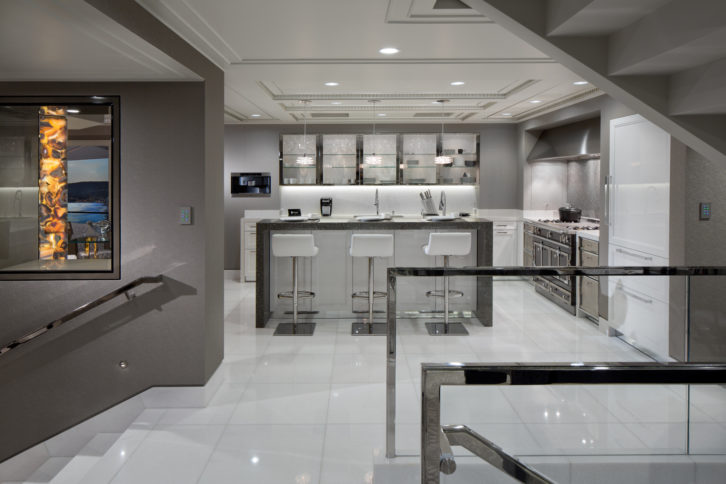
Given that there are now, on average, 52 devices in every home [source] and that people are now living, working, learning, exercising, and conversing on Zoom and other video-based platforms at home more than ever before, the roles of both the technology integrator and the interior designer have dramatically evolved. Together, we are now serving as design consultants, but each of us has a distinct and critical role. To best serve homeowners today, especially those at the middle and upper end, we have got to work better together. Here are a few ways you can capitalize on the opportunities that exist to align with — and do more business through — interior designers.
First things first, let’s address nomenclature and misconceptions. Interior decorators and interior designers are not one in the same. According to The New School of Architecture, “Many people use ‘interior designer’ and ‘interior decorator’ interchangeably, but the two professions are very different. Interior design is the science of understanding behaviors to help property owners create a functional room within a building, including the shapes of a room’s walls, floors, and more. An interior designer works closely with architects to design the interior space and has a good amount of experience within the construction field. Decoration or decorating, on the other hand, is the furnishing of a space with beautiful or fashionable things while working within its functionality. For example, an interior decorator may recommend changing the layout of the furniture. In other words, decorators do not tend to design, whereas interior designers may design and decorate.” [Source]
Just like integrators, interior designers are creative, insightful, and highly, differentiated by their affiliations, certifications, and experience. In my opinion, interior designers should be ASID (American Society of Interior Designers) accredited. To become ASID accredited, one has to have a four-year college degree in an accredited interior design program in a college or university and have worked for a firm for at least two years to qualify to even take the test. The test itself takes two days and is extremely difficult to pass, but is required for the practice of many types of interior design in regulated jurisdictions throughout North America. As such, designers who achieve and maintain their ASID accreditation have superior professional skills, experience, and credibility. It also (typically) ensures they have a deep appreciation for what it takes to achieve or exceed clients’ expectations. In our world, ASID affiliation for interior designers is what sets us apart and differentiates us, and it means we’re perfectly suited to work together.
Now, with that in mind, it’s important to note that, generally speaking, interior designers understand, recognize, and appreciate the value of technology, and that many now develop interiors that enhance both the effect it can have and the experience it offers throughout the home and around the property. Our job is to collaborate with clients to create comfortable, functional, and visually stunning interiors that provide a carefully curated, customized, one-of-a-kind space. Technology helps make that possible and, for this reason, we deeply respect the role of the integrator. It’s just that sometimes the way integrators work conflicts with how designers work, and that alone can create a challenging environment or a catastrophic result.
Also by Lisa Slayman: Illuminating Ideas for a Better Home Theater Design
It doesn’t have to be that way, though. Let me explain.
All too often, the mindset of the integrator is to solve the Rubik’s Cube as quickly as possible and to get in, get out, and get paid. Interior design professionals, on the other hand, are in it for the long haul; we expect and strive for an ongoing working relationship with our clients that positions us as their go-to for lifestyle enhancements. To serve this role well, we need our gurus, and that should include you, the integration pro.
Just as you customize the AV system design for the needs of your clients, an interior designer looks to achieve cohesiveness and sources custom options for carpeting, seating, fixtures, appliances, and more that work well together — and we can do it all without stepping on your toes. The challenge is that we need to know what you know about technology at a high level so we can have the confidence to facilitate it throughout our work. Believe me, very few of us have any interest in being the tech pro — we simply want to be able to navigate the conversation with clients and bring in the best trade partners in to execute the plan.
In fact, good interior designers can make your job easier by handling the lion’s share of tasks that you really don’t have the resources for, time to do, or frankly don’t care to be bothered by. Maybe your customer wants their home theater to have an Old Hollywood theme. An interior designer specializing in home theater design knows precisely how to design, document, and engineer for proper sound and video reproduction, as well as for acoustics, and know the importance of taking wall thicknesses, lighting, HVAC, projector requirements, and more into consideration. They will typically spend 10-25 percent of their time “designing,” and the remainder of their time will be spent producing necessary construction documents, drawings, and specifications that play a huge part in the overall success of the project. That information becomes a communication system for the contractor, vendors, and client, and is crucial for design, cost, and execution.
Interior designers are also connected to all the right resources. They can go straight to the source, like direct to the carpet mill or material source if the customer wants special colors, patterns, materials, or finishes. They can work with a lighting designer to create ideal ambiance. And they know where to go for the perfect accoutrements; exactly what to order to make all of the disparate elements come together and function optimally in the space without hindering performance.
Most importantly, they can help ensure things get done right — on time —and installed without affecting your workflow. And in such a way that your specialties shine and your firm isn’t bogged-down with costly and time-intensive interior design considerations.
Also by Lisa Slayman: Top 10 Home Theater Design Trends
Getting Great Referrals is the Goal
The interiors of nearly every luxury home on the planet have been designed by a professional. High-end homeowners typically maintain solid, ongoing relationships with their designers, and these relationships can span a lifetime. Establishing a friendly, ongoing relationship with interior designers, therefore, can be stairway to heaven and direct path to some highly exclusive and profitable tech integration projects. Should a designer’s client ever express an interest in AV, as a designer’s tech liaison, you will inherently be the first person they think of to handle the job. Their referral removes many of the initial hurdles of landing a big job — namely convincing clients that you’re the best company for the project. The interior designer has already done this for you.
Together, we can make people’s homes not only look great, but sound and feel fantastic. And when that happens, harmoniously, your firm is sure to get the gig next time and heartfelt, meaningful referrals well into the future.
Lisa Slayman, ASID, IIDA, is principal of Slayman Cinema and Slayman Design Associates.

